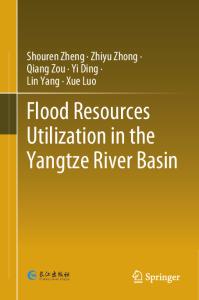Inconsistencies in Yangtze River annual maxima analyses
- PDF / 482,513 Bytes
- 3 Pages / 439.37 x 666.142 pts Page_size
- 89 Downloads / 483 Views
Inconsistencies in Yangtze River annual maxima analyses Earl Bardsley1 Received: 17 April 2020 / Accepted: 8 May 2020 © Springer Nature B.V. 2020
Abstract Yangtze River annual maxima data are available for 1877–1981, for Yichang near the Three Gorges Dam. However, subsequent annual maxima seem not available outside China. Therefore, published methodologies applied to Yangtze discharge maxima cannot always be checked independently against data, despite papers appearing in international journals. The point is illustrated with respect to apparent anomalies in parameter estimation for the generalised extreme value distribution (GEV) applied to Yichang annual maxima. Specifically, Wang et al. (Stoch Environ Res Risk Assess 31: 2281–2296, 2017) list GEV parameter estimates derived from the period 1890–2000. These parameter values give underfit of all Yichang annual maxima between 1877 and 1981. In contrast, the GEV parameter estimates of Sutcliffe (J Hydrol 96: 159–171) paper give better data fits. It may be that the underfit is related to the proposed methodology, which should then be treated with caution. Alternatively, there may be just a typographical error in a listed parameter value. Whatever the cause, the point is made that it would be helpful to have complete time series of hydrological data from China to confirm published analyses. Keywords Yangtze River · Annual flow maxima · Three Gorges Dam · GEV fitting · Estimation errors
1 Introduction Yangtze River discharge has been recorded at Yichang since 1877, providing data in support of design of the nearby Three Gorges Dam. As part of their example data related to modelling uncertainties in extreme flood estimations, Wang et al. (2017) utilised Yangtze River annual discharge maxima for Yichang for the period 1890–2000. It was concluded that this time series showed no evident trend or step change, so could be regarded as homogeneous. Xiong and Guo (2004) reach a similar conclusion for the Yichang time series for the period 1882–2001. Similarly, no significant trend was detected for the Yichang annual discharge maxima for 1961–2000 (Jiang et al. 2008) or for the period 1955–2002 (Fang et al. 2018). The time series of Yichang annual maxima would therefore appear suited to distribution-based analysis based * Earl Bardsley [email protected] 1
Faculty of Science and Engineering, University of Waikato, Private Bag 3105, Hamilton 3240, New Zealand
13
Vol.:(0123456789)
Natural Hazards
(a)
(b)
Fig. 1 Gumbel plots of Yangtze annual discharge maxima at Yichang 1877–1981. Data from Rodier and Roche (1984). a Plotted GEV curve as obtained from the maximum likelihood estimates given by Wang et al. (2017), b Plotted GEV curve as obtained from the maximum likelihood estimates given by Sutcliffe (1987)
on the maxima being treated as independent random variables from a common distribution. The Type 3 (EV3) form of the generalised extreme value distribution (GEV) appears suited to describe the data and was used, for example, by Sutcliffe (1987) and Wang
Data Loading...











